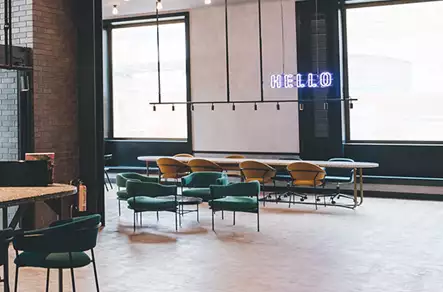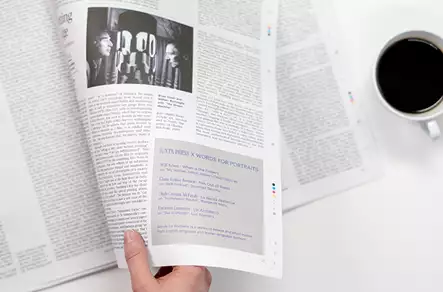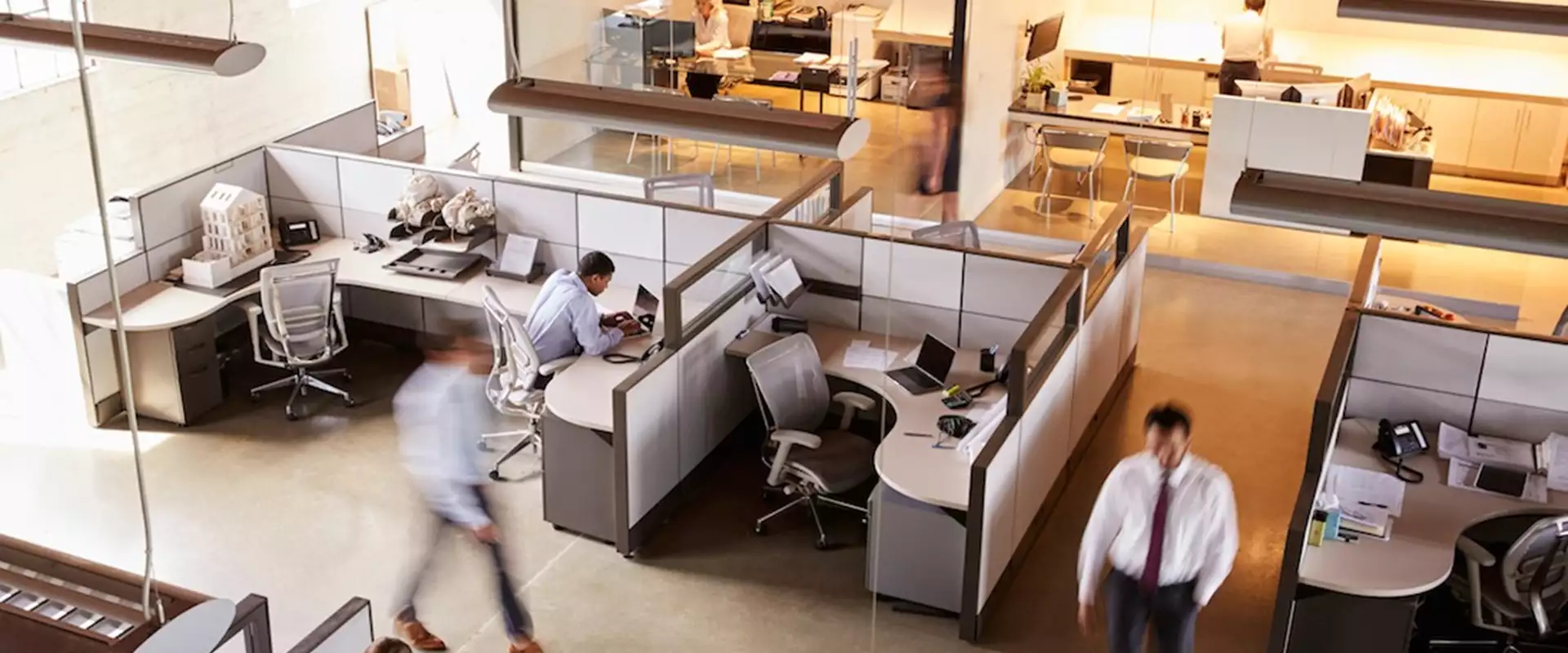In light of the government's new guidelines on how UK businesses can reopen their workplaces, Workspace is working hard to ensure its customers feel secure and safe in returning to work when the time comes. In preparation, here are some key precautions to think about when getting ready to re-enter your office space.
Although working from home has been vital in slowing the spread of coronavirus, many businesses are now looking forward to re-entering their office space and returning to as high a level of "business as usual" as they can in a time of global crisis.
Flexible spaces that allow for a level of adaptability will be vital in allowing for social distancing precautions to be implemented quickly and effectively. In addition, many companies will rely on flexible hours and rotas to manage their space and the amount of people that come into the office each day.
These changes should be viewed positively, claims Google's CEO, Sundar Pichai. He believes that coronavirus has brought with it “an opportunity to reimagine how we work,” with a safer and more hygienic workplace emerging in the wake of the pandemic.
With the latest government guidance in mind, Workspace is embarking on a wide-scale reconfiguration of its business centres to implement social distancing and hygiene facilities and ensure its properties provide a safe space to work from. This will include the wide-spread use of social distancing signage, sanitising stations at key touchpoints, thorough daily cleaning programmes, one-way circuits, and furniture distancing – all important steps to put the safety of its customers front and centre.
In addition to Workspace's efforts, here is a checklist of key actions you need to think about taking to create a safe office that your team can return to with peace of mind:
Double-down on hygiene practices
Regularly spray and wipe surfaces – such as desks, tables, worktops and door handles, light switches and blind handles – and objects – such as telephones, keyboards and computer mouses – with disinfectant. This is a key way the COVID-19 virus can spread and it can survive for up to 72 hours on plastic and stainless steel surfaces, states the World Health Organisation (WHO). Check the WHO guidelines for further information on how to keep your space hygienic.
Brief your staff about the importance of washing their hands upon entering and leaving the office – and as regularly as they can in-between. Discourage them from touching their faces. Place sanitising hand rub dispensers in prominent places around the workplace and make sure these are regularly refilled. If you can, provide employees with personal hand sanitiser for their own use and make sure face masks are available at your office for those who wish to use them.
Create visible signage
Put up signs visible in the workplace that remind employees not to attend work if they have coronavirus symptoms; to wash their hands frequently and avoid touching eyes, nose and mouth with unwashed hands; and consider directing the movement of people into lanes with arrows in busy areas of the workplace. Floor stickers with arrows and social distancing information can be used too.
Switch to digital paperwork
Move away from physical paperwork, sending letters in the post, and using shared printers and opt for remote transfers of materials where possible, for example e-forms, emails and e-banking.
Limit tech and stationary sharing
Try to provide technology and accessories – such as a computer, mouse, keyboard, headset and stationary – to each individual on your team that needs it and encourage them to clean frequently and avoid sharing.
Consider staggering start and finish times
Allow your staff to travel in and finish at different times to avoid travelling on public transport at peak times and limit the number of staff in the office at one time. Staff should work from home if possible, especially if they are vulnerable. If this is not possible, consider splitting your team up with alternate days working from home and in the office. By employing staggered shift patterns, you can tactically reduce the amount of people in your space at one time.
Look to implement physical distancing
In order to keep staff at least two meters apart at all times, separate individual desks with a two meter barrier. If you are unable to move desks apart, use physical barriers such as an unused monitor and desk chair in-between each individual to mark the divide. You can also use a red tape "X" on the table surface of each buffer zone.
Use back-to-back or side-to-side working rather than face-to-face where you can. If staff must work face-to-face for a substantial period of time with more than a small group of people, assess whether the activity can safely take place.
Minimise the number of people each individual has contact with by using 'fixed teams or partnering' to ensure that each person only works with a few others.
Brief your staff in meetings about the importance of not gathering in communal areas and encourage them to collaborate on work virtually whenever possible to limit unnecessary face-to-face meetings.
Avoid hot-desking and use floor markings to mark the two meter distance in likely points of crowding, such as entry point to office, kitchen area, and communal break areas. If it is an option, use plexiglass barriers at points of regular interaction, such as reception desks.
Adapt your kitchen area
Make sure individual seating has a two-meter buffer zone between each seat and encourage your staff to bring their own food in whenever possible. Support this messaging through posters in the kitchen area and via other communication channels. You should also remind them to wash hands for 20 seconds before and after eating. Consider staggering meal times to avoid overcrowding.
Share the results of your risk assessment with your workforce
If you have taken all the corrects steps to creating a safe workplace outlined by the government then print out the "Staying COVID-19 Secure in 2020" poster, sign it, and display it in your workplace.
For real-time updates on where you can access business support during the coronavirus outbreak, follow Workspace on Twitter, Instagram, Facebook and LinkedIn.
For information on how Workspace is responding to COVID-19, please visit our coronavirus response page.



